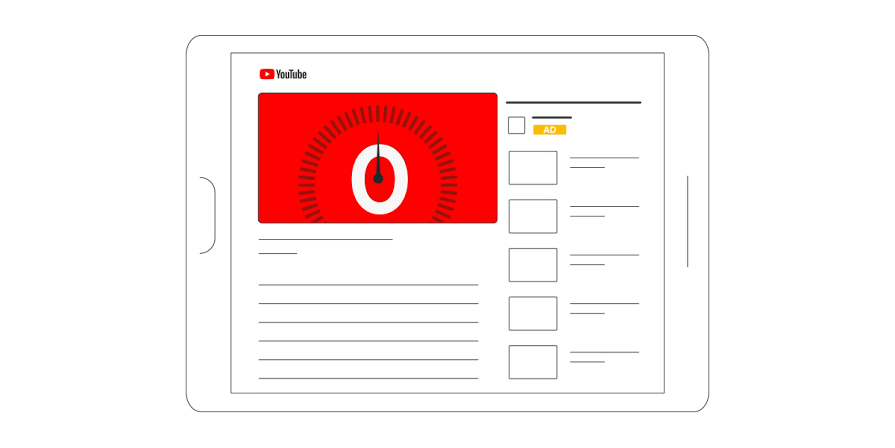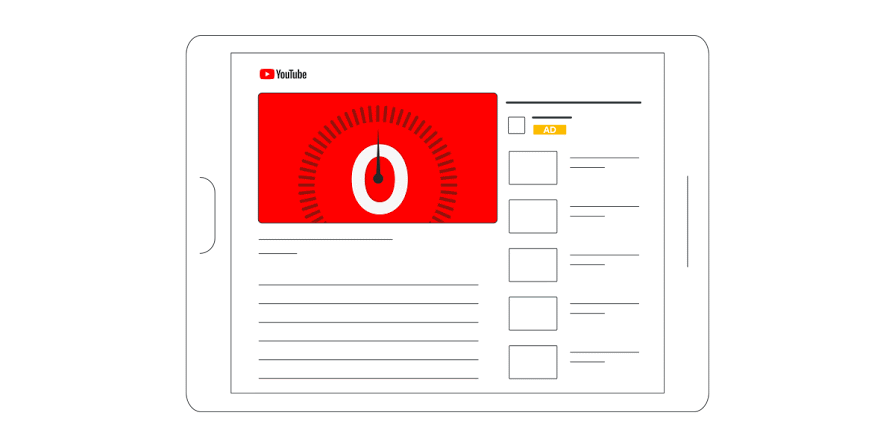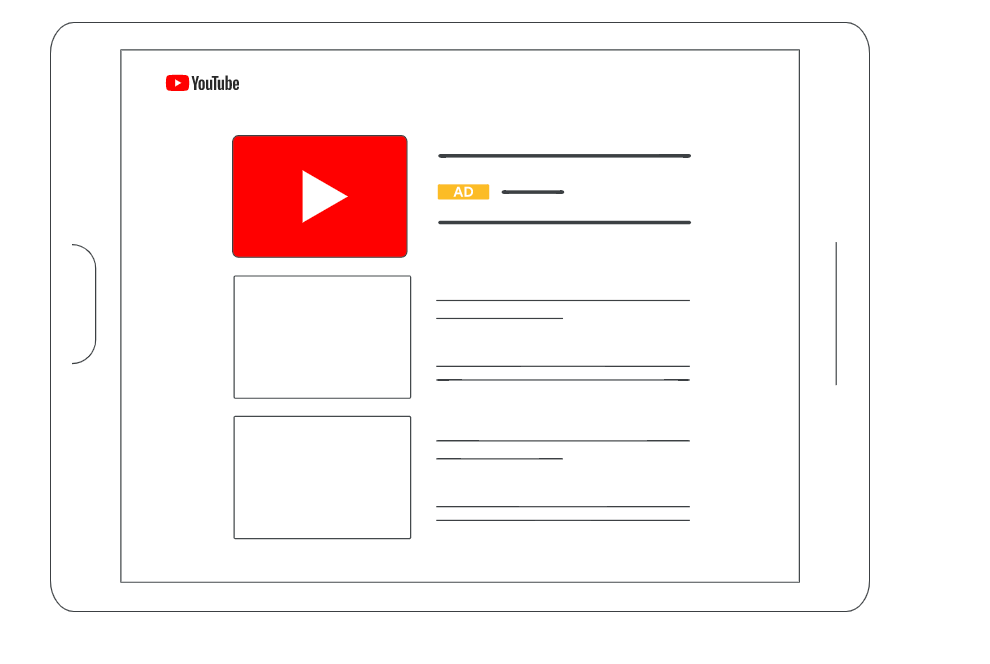Introduction to YouTube TrueView Ads
There is no doubt about the popularity of YouTube’s TrueView Ads. Every time you see that “Skip Ad” button before a YouTube video, you’re watching a TrueView Ad.
In Q4 2020, YouTube earned $6.9B from TrueView Ads, doubling the number of advertisers.
In this post, we will explore the types of TrueView Video Ads you can run on YouTube and understand the key differences between them.
The 3 types of YouTube TrueView Ads
The 3 types of TrueView ads you can run are:
- Skippable In-stream Ads
- Non-Skippable In-stream Ads
- YouTube Discovery Ads
Based on your business goals as well as your video content format, you can pick the type of YouTube ad that suits you the best.
However, as you may have seen browsing YouTube videos, the skippable in-stream ads are the most popular (and my own favorite pick too) for multiple reasons.
You’ll know why this is the top pick once you understand all the 3 types of ads.
Skippable in-stream ads

They run ads run before, during, or after other videos on YouTube and give the option to viewers to skip the ad after 5 seconds.
Nonskippable in-stream ads

YouTube Discovery Ads (now In-Feed Ads)

Key Differences
Let’s see the key differences between these 3 types of trueview ads below:
Duration
- Skippable In-Stream Ads can be between 12 seconds up to 6 minutes (while Skippable ads on YouTube Kids can only be up to 60 seconds)
- Non-Skippable In-Stream Ads are 15 seconds or shorter (the maximum duration is 20 seconds for some regions i.e. EMEA, Mexico, India, Malaysia and Singapore)
- Video Discovery Ads are the YouTube video itself (depending on the duration of the YouTube video being promoted)
Placement
- Skippable In-Stream Ads appear before / during / after other videos. This is partly based on the specifications set by the YouTube channel that is showing the ads.
- The placement for both types of In-stream ads (skippable and non-skippable) is the same.
- Video discovery ads appear on YouTube search results, alongside other related videos and on the YouTube mobile home page.
Viewer Options
- Skippable in stream ads, as the name suggests, can be skipped after 5 seconds
- The viewer doesn’t have an option to skip Non-Skippable In Stream Ads
- Video discovery ads play the video like a usual YouTube video and it’s up to the user to see the full view or skip it (just like they would do with any YouTube video)
When to Use Each Ad Type?
Now, we come to the most important question.
- Based on the ad type descriptions, you can see that Discovery Ads are the most “organic” so to speak however they are still an “option” for people to choose to click on or not.
- In-stream ads, however, will be on the viewers video click itself which means you can be sure to be viewed, at least for a few seconds within which you should grab attention and target to maintain attention.
From experience, I would run Discovery Ads when I know my audience is in the product CONSIDERATION phase but for everything else, I stick to Skippable In-Stream Ads.
However, remember that experimentation is key and it’s important to test what works best for you first.
You should also test different audiences against different ad types to see what combination works best.
Bidding and Cost
So why are advertisers leaning toward Skippable In-Stream Ads over Non-Skippable In-Stream Ads?
Well, the key advantage of using Skippable In-Stream ads comes from the bidding perspective.
If we use CPV bidding, we pay only when:
- a viewer watches 30 seconds of the video being advertised
- or a viewer watches the full duration of the video if it’s shorter than 30 seconds
- or if the user interacts with the video (whichever comes first)
This is a great way for brands to show their message to viewers using this optimal bidding strategy.
On Non-Skippable In-stream video ads, you will pay for Target CPM bidding.
And while using Video Discovery Ads, you will pay for each click on the video thumbnail irrespective of the watch time.
Make sure you try different ad types to measure the CPV as well as other key metrics and make data-driven decisions.
Update on YouTube Discovery Ads (Now In-Feed Ads)
Youtube Discovery Ads are now In-feed Ads. This was an update announced by Google on November 17, 2021, a few months after this article was originally published.
On November 17, 2021, Google updated the name ‘YouTube Video discovery ads’ to ‘In-feed video ads’. These ads are placed along YouTube content that also resonates with your target audience.
You can learn more about in-feed ads for YouTube here.
Other Tips (for Advertisers)
- Experiment with all ad types with a small budget first for a week’s time
- Use a testing process to find the best video candidate for your ads
- If you’re looking for lead generation or website traffic, always stick to Skippable In-Stream Ads where you can have a CTA button to your lead generation or website URL
- Test different bidding options )apart from CPV bidding) for Skippable In-Stream ads
- Split test video thumbnails to find the best performer
- Grab the viewers attention in the first 5 seconds of the video
All the best for your YouTube video ads!



